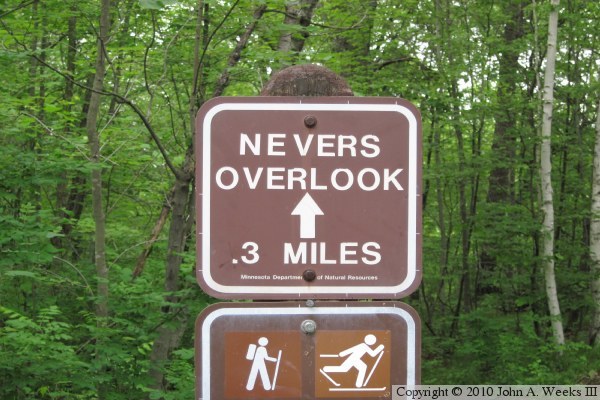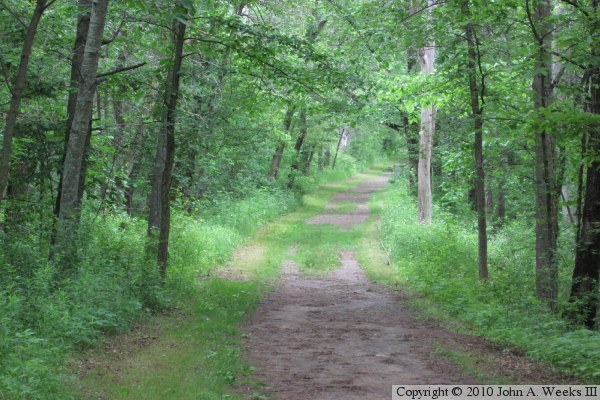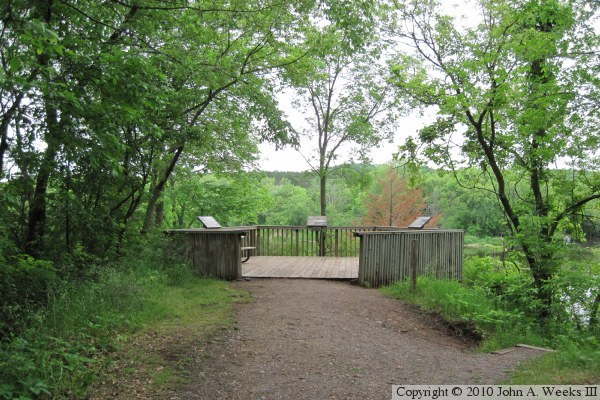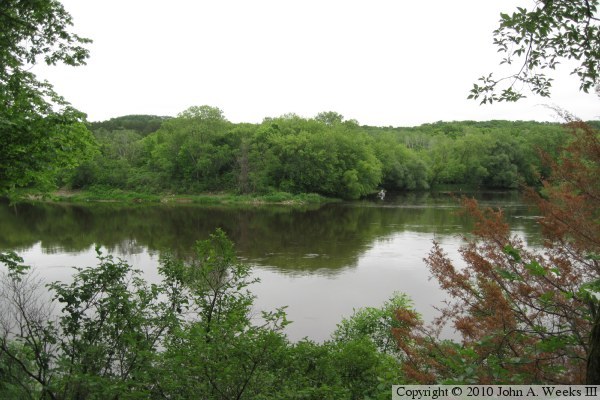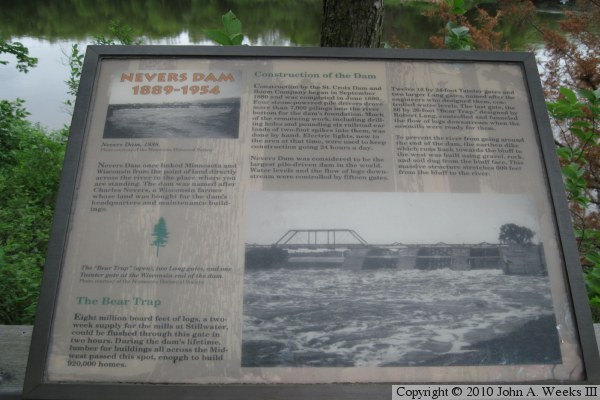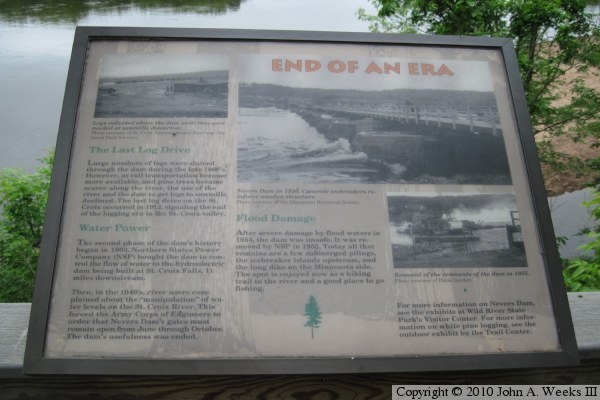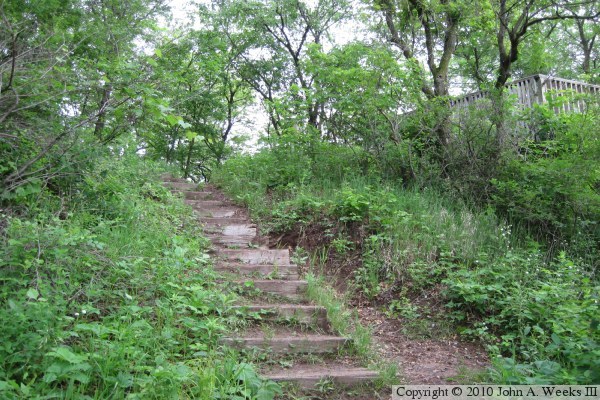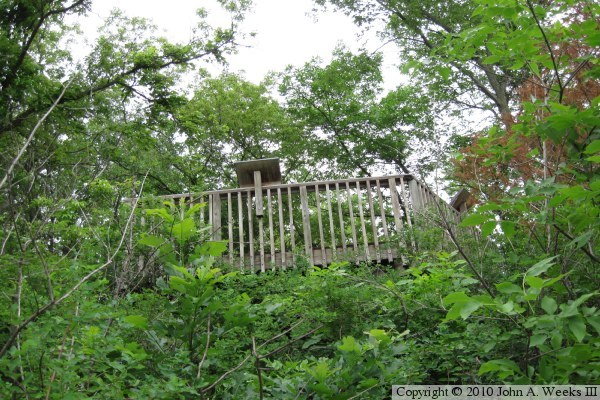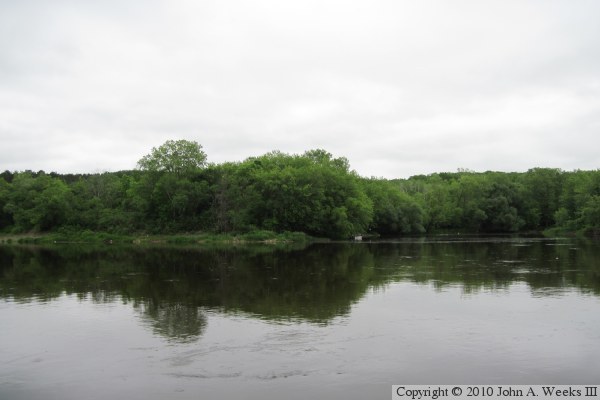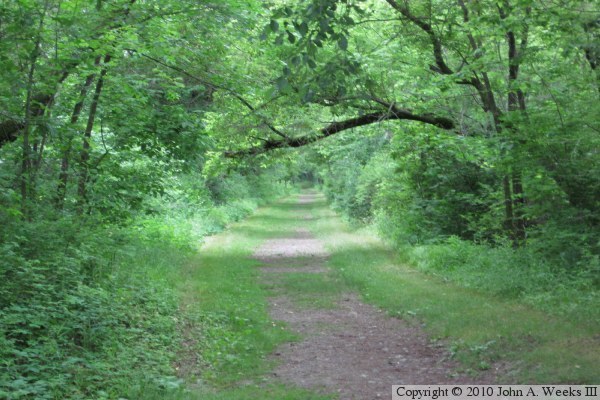To address the problem of the log jams, Frederick Weyerhaeuser decided to build a dam about 11 miles up river from the Saint Croix Falls. They leased land from local farmer Charlie Nevers. They sunk piles into the river, built stone cribs, and installed 15 sluicing gates and one huge eighty foot wide Bear Trap Gate. The dam was very expensive, costing $250,000 in period money. The investors hoped to recover this cost by charging tolls on wood that passed through the dam, and by improved operations of the boom site and mill at Stillwater. At the time, this was the largest wooden dam in the world, and the Bear Trap Gate was the largest dam gate in the world.
The dam was operated on a two week schedule. Water would be backed up behind the dam for 2 weeks. Then lumberman would be told to get their logs into the river. Once the gates were opened, the logs would slide past the dam and ride the wave of high water downstream. As soon as the logs were through, the dam would be closed up for another two weeks.
The supply of logs was largely exhausted by 1902. The dam was sold to Northern States Power. NSP wanted to use the dam to control the river flow while it was building the new dam at Saint Croix Falls. NSP ran the project until the 1950s. In May of 1954, high water damaged the structure. The dam had lost much of its usefulness after the Saint Croix Falls Dam was completed. Now that Nevers Dam was unsafe, NSP decided to completely remove the remaining structure. There are no remains of the dam in the river proper. A 100 foot section of the dike remains in place on the Wisconsin side, and much of the dike remains intact on the Minnesota side of the river within the Saint Croix Wild River State Park.
The Nevers Dam also functioned as a highway crossing over the Saint Croix River. The top of the dam featured a flat platform suitable for buggy traffic and later for cars. The 85 foot long central gate featured a small through truss bridge to carry traffic over the discharge outlet. When the dam was removed, locals lost a convenient river crossing point.
The Nevers Dam featured a very small electrical generator. It was used to power electrical lights on the structure to allow log processing to work 24 hours a day. This was the first electrical equipment in the area, and people reportedly drove from miles around to see the lights in operation at night.
The photo above is the Minnesota side of the Saint Croix River at the former dam site as seen from the east bank of the river. There is no part of the dam remains visible from this vantage point, but part of the earthen dike still exists further inland on the Minnesota side of the river.


